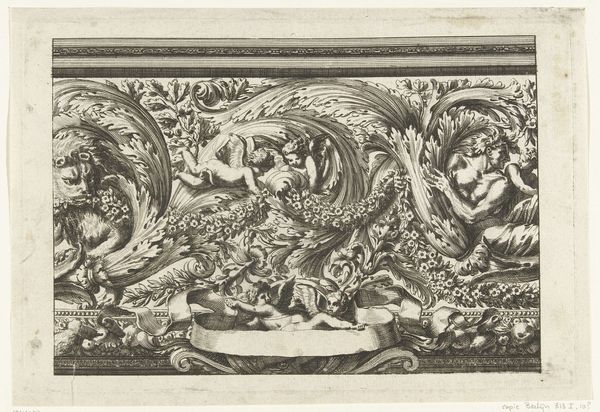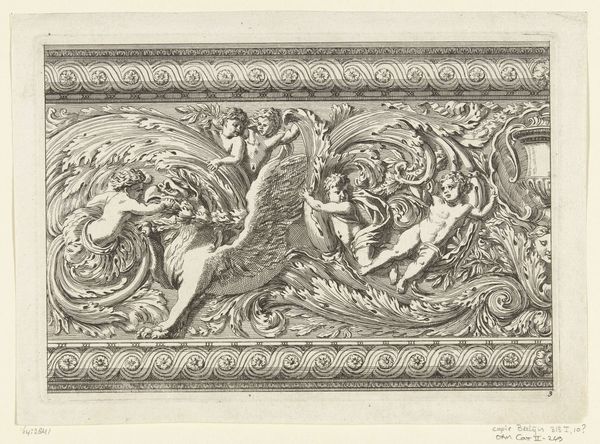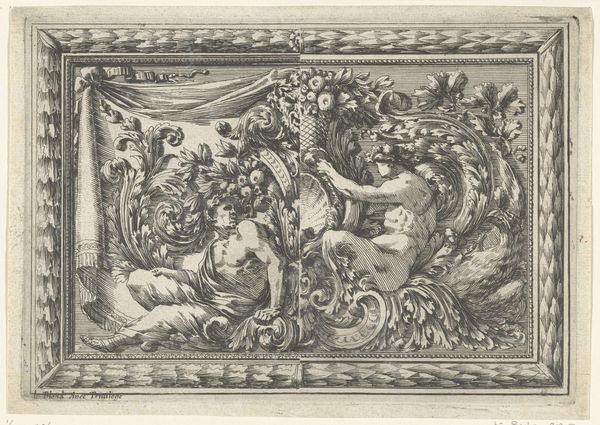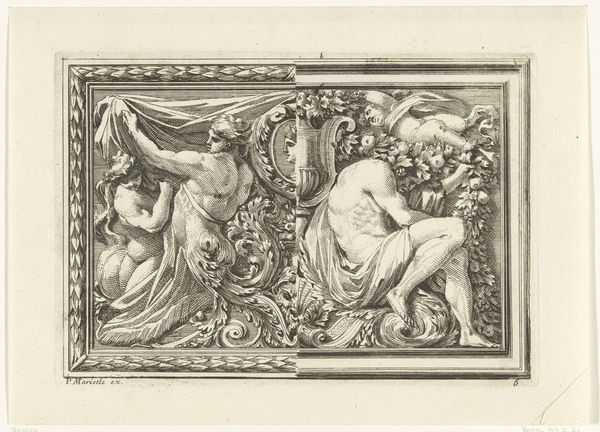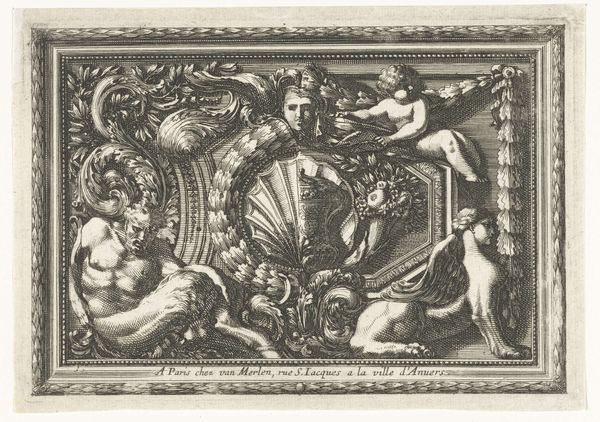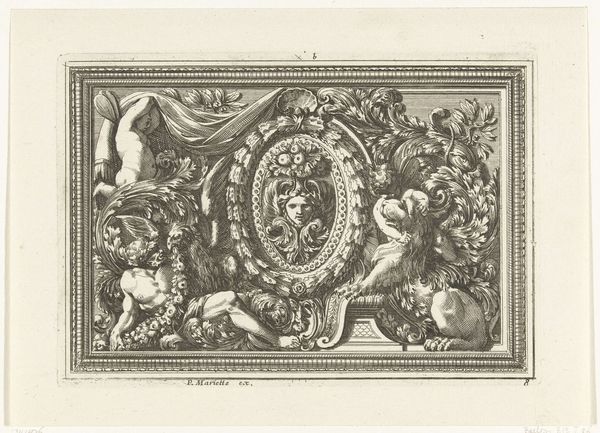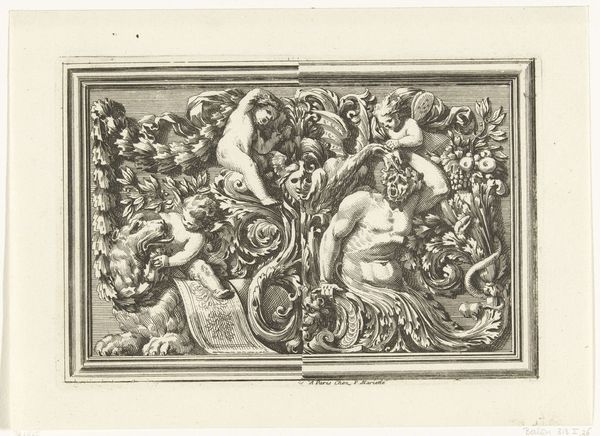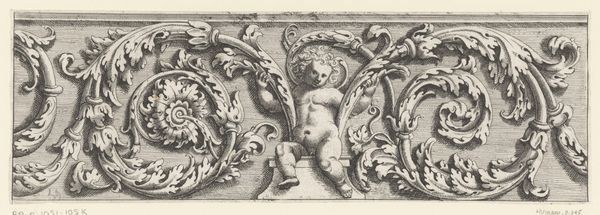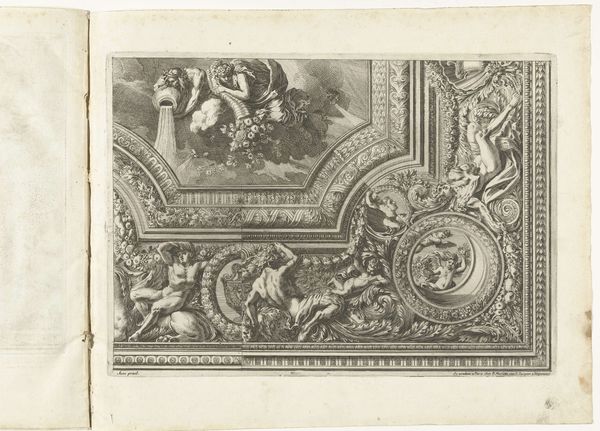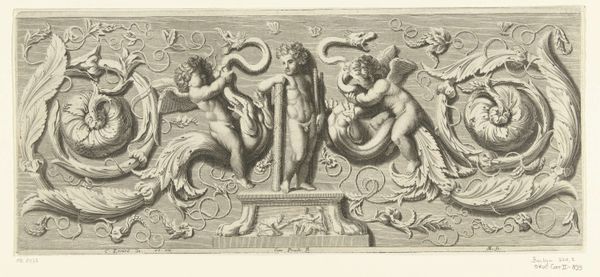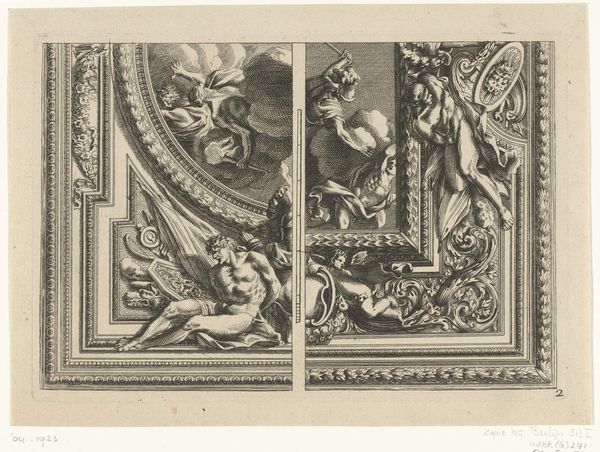
print, engraving
#
portrait
#
allegory
#
baroque
# print
#
classical-realism
#
line
#
history-painting
#
engraving
Dimensions: height 137 mm, width 196 mm
Copyright: Rijks Museum: Open Domain
Editor: So, here we have Jean Lepautre's "Panel with Mask in Round Medallion" from 1667, a print at the Rijksmuseum. It’s incredibly detailed, but I'm mostly drawn to the central image - a winged face. How do you interpret this work? Curator: The mask, framed by the classical figures and foliage, serves as a potent symbol, acting as a vessel through which the past speaks to the present. Do you recognize anything specific about that central image itself? Editor: It reminds me of Roman or Greek mythology – maybe a deity? Perhaps representing wisdom or victory because of the laurel wreath? Curator: Exactly! The wreath signals triumph. Think about how masks functioned in antiquity. They were about more than hiding; they amplified emotion, ritual, identity. Lepautre is working within a well-established visual vocabulary, isn't he? Consider how repeated images gain resonance over centuries. This mask links back to dramatic performances, religious ceremonies, and even political power. It condenses those histories into one object. The winged element – does that evoke any emotions in you? Editor: It does make me think of freedom and escape, but also a sort of ethereal quality. So, you're saying the image isn't just beautiful; it’s carrying all this cultural baggage with it? Curator: Precisely! It embodies an archive of human expression. When we see those repeated visual symbols, we’re not just appreciating an aesthetic, we're encountering echoes of shared human experiences and their long life. Editor: I never thought of prints holding so much significance. I suppose seeing it this way highlights art's powerful ability to preserve meaning across time. Curator: Indeed, these aren’t just pretty patterns – they're symbolic time capsules!
Comments
No comments
Be the first to comment and join the conversation on the ultimate creative platform.
